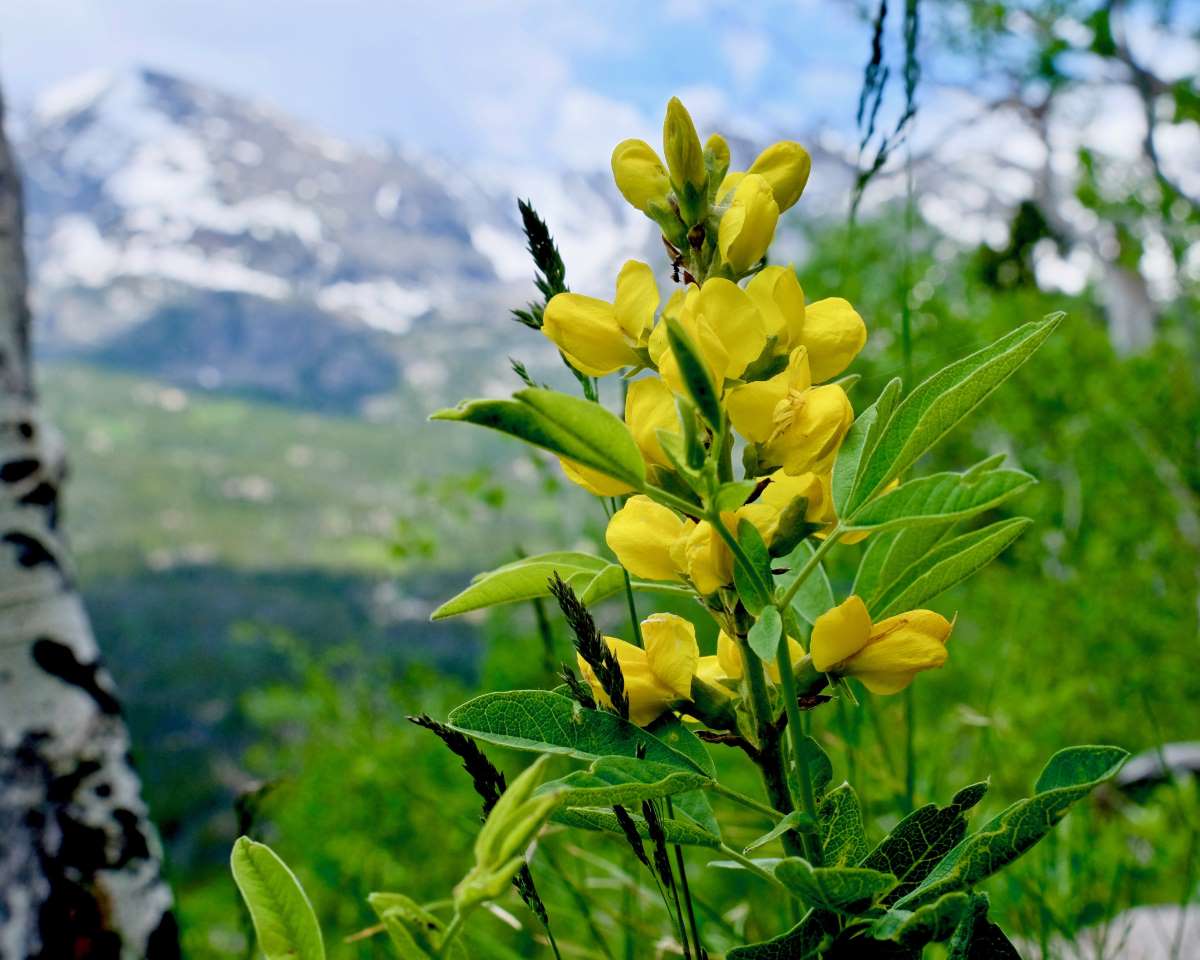Description
Thermopsis –
There are approximately 20 rhizomatous perennials in this genus. They are found naturally occurring from grassy mountainsides, light woodland and stream sides, in Siberia, Northern India, Northeast Asia, and North America. They are grown for their attractive foliage and Lupine like flowers. Erect stems bear alternate, stalked trifoliate leaves, some silver hairy, when persistent, leafy stipules, the similar basal leaves are produced in smaller numbers. Pea like yellow or purple flowers, with rounded standard petals and roughly equal sized keel and wing petals, are born in terminal or axillary racemes. Suitable for a mixed or herbaceous border, or wild flower garden, T. rhombifolia is invasive and best grown in a wild garden. The flowers are attractive to bees.
Grow in light, well drained, fertile, loamy soil in full sun or partial shade, although they will tolerate a range of conditions.. Usually long lived, they resent root disturbance.
Prone to slugs,, aphids, powdery mildew, and leaf spot.
T. rhombifolia – T. montana – Mountain False Lupine – This rhizomatous perennial found from the Rocky Mountains to New Mexico grows 36″ tall and 24″ wide. From unbranched stems it carries 3 palmate leaves, to 4 ½” long, with broadly egg shaped leaflets. The stems and lower leaf surfaces are softly silver hairy. IN early summer, yellow flowers, 1″ long, are produces in erect, terminal racemes.
Zones 3-8




